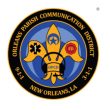NIST tests firefighter tracking device
Researchers at the National Institute of Standards and Technology are studying a wireless, personnel alert safety system, or PASS, device at the request of the National Fire Protection Association. Because the wireless capability is a relatively new component, NIST will determine its reliability in fire environments, develop manufacturing standards and later release operational best-practices guidelines, said Kate Remley, the research scientist who is spearheading the project.
According to the NFPA, firefighters can be overcome by a fire's heat or smoke and may be unable to alert other fireground personnel. As a result, PASS devices were designed to activate an audible alarm if a firefighter becomes incapacitated — leading to device-performance standards found in NFPA 1982. However, devices only were required to detect motion and not to transmit the data wirelessly.
Now, manufacturers are beginning to incorporate additional technology to improve fireground safety. Specifically, manufacturers have started to make the device wireless capable, so the distress alarm can be sent in near-real-time from the firefighter's PASS device — or a mobile sensor clipped to turnout gear — to an incident command wireless laptop located outside a building, Remley said. In addition, it is capable of acting as a repeater to relay a signal to another PASS device. It also can be used in a point-to-point configuration to transmit signals from a PASS device to a base station.
According to Remley, the study will support the development of technical standards to govern the performance — such as signal penetration into buildings or acceptable transmission quality — for new and existing RF-based PASS devices.
“There are few standards available that tell firefighters when and where they can safely deploy these devices, or whether they can count on them to reach from the inside to the outside of a building,” Remley said. “As with every wireless system, the technology won't work in every situation so we are … developing test methods so firefighters will know when they can expect PASS devices to work and in what situations.”
More lives will be safeguarded if PASS devices are in constant communication. That's why testing the devices to determine when and where radio signals are reliable — and under what operating conditions in which they should be used — is so important, Remley said. Unlike a two-way radio, data on the firefighter's status needs to be sent continuously.
“You have to maintain that radio signal at all times,” she said.

















